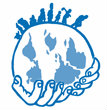For the first time, a World Health Organization committee has recommended the global agency form a working group to e
Reports Search
On October 1, 2021, the WHO published the new edition of its Model Lists (the EML) of Essential Medicines and Essenti
While the COVID-19 pandemic has resulted in huge setbacks for health systems – it has also highlighted the needs.
We are writing regarding World Health Organisation’s Strategy Report: “Engaging the private health service delivery s
In 2015 the Sustainable Development Goals of the United Nations stipulated that certain forms of subsidies that the f
The 2030 Sustainable Development Goals (SDGs) emphasize partnership to attain health related goals and Universal Heal
The WHO’s Expert Committee on Biological Standardisation (ECBS) has declined a request to revise its 2009 Guidelines
This paper reviews contemporary policy debates regarding priority setting for universal health coverage (UHC) in the
This note reviews decision making in and around the WHO with a focus on the debates around ‘counterfeit’ medicines an
Pagination
- Previous page
- Page 39
- Next page
